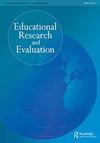变化世界中的变态心理学(第10版)
IF 3.3
Q1 EDUCATION & EDUCATIONAL RESEARCH
引用次数: 9
摘要
2.1识别神经元、神经系统和大脑皮层的主要部分,并描述它们的功能。2.2评估异常行为的生物学观点。2.3描述异常行为的心理动力学模型的主要特征,并评估其主要贡献。2.4描述基于学习的异常行为模型的主要特征,并评估其主要贡献。2.5描述非正常行为的人文模型的主要特征,并评估其主要贡献。2.6描述异常行为认知模型的主要特征,并评估其主要贡献。2.7评估心理障碍发生率的种族差异。2.8评估我们对异常行为理解中的社会文化视角。2.9描述异常行为的素质-压力模型。2.10评估异常行为的生物-心理-社会视角。2.11确定三种主要类型的帮助专业人员,并描述他们的培训背景和专业角色。2.12描述以下形式的心理治疗的目标和技巧:心理动力疗法、行为疗法、以人为中心的疗法、认知疗法、认知行为疗法、折衷疗法、团体疗法、家庭疗法和夫妻疗法。2.13评估心理治疗的有效性以及非特异性因素在治疗中的作用。2.14评估多元文化因素在心理治疗中的作用以及少数民族使用心理健康服务的障碍。2.15确定精神药物或精神病药物的主要类别和每类药物的例子,并评估其长处和短处。2.16描述电休克治疗和心理外科的使用,并评估其有效性。2.17描述心理外科的使用并评估其有效性。2.18评估生物医学治疗方法。本文章由计算机程序翻译,如有差异,请以英文原文为准。
Abnormal psychology in a changing world (10th ed.)
2.1 Identify the major parts of the neuron, the nervous system, and the cerebral cortex, and describe their functions. 2.2 Evaluate biological perspectives on abnormal behavior. 2.3 Describe the key features of psychodynamic models of abnormal behavior and evaluate their major contributions. 2.4 Describe the key features of learning-based models of abnormal behavior and evaluate their major contributions. 2.5 Describe the key features of humanistic models of abnormal behavior and evaluate their major contributions. 2.6 Describe the key features of cognitive models of abnormal behavior and evaluate their major contributions. 2.7 Evaluate ethnic group differences in rates of psychological disorders. 2.8 Evaluate the sociocultural perspective in our understanding of abnormal behavior. 2.9 Describe the diathesis-stress model of abnormal behavior. 2.10 Evaluate the biopsychosocial perspective on abnormal behavior. 2.11 Identify three of the major types of helping professionals and describe their training backgrounds and professional roles. 2.12 Describe the goals and techniques of the following forms of psychotherapy: psychodynamic therapy, behavior therapy, person-centered therapy, cognitive therapy, cognitive-behavioral therapy, eclectic therapy, group therapy, family therapy, and couple therapy. 2.13 Evaluate the effectiveness of psychotherapy and the role of nonspecific factors in therapy. 2.14 Evaluate the role of multicultural factors in psychotherapy and barriers to use of mental health services by ethnic minorities. 2.15 Identify the major categories of psychotropic or psychiatric drugs and examples of drugs in each type, and evaluate their strengths and weaknesses. 2.16 Describe the use of electroconvulsive therapy and psychosurgery and evaluate their effectiveness. 2.17 Describe the use of psychosurgery and evaluate its effectiveness. 2.18 Evaluate biomedical treatment approaches.
求助全文
通过发布文献求助,成功后即可免费获取论文全文。
去求助
来源期刊

Educational Research and Evaluation
EDUCATION & EDUCATIONAL RESEARCH-
CiteScore
3.00
自引率
0.00%
发文量
25
期刊介绍:
International, comparative and multidisciplinary in scope, Educational Research and Evaluation (ERE) publishes original, peer-reviewed academic articles dealing with research on issues of worldwide relevance in educational practice. The aim of the journal is to increase understanding of learning in pre-primary, primary, high school, college, university and adult education, and to contribute to the improvement of educational processes and outcomes. The journal seeks to promote cross-national and international comparative educational research by publishing findings relevant to the scholarly community, as well as to practitioners and others interested in education. The scope of the journal is deliberately broad in terms of both topics covered and disciplinary perspective.
 求助内容:
求助内容: 应助结果提醒方式:
应助结果提醒方式:


